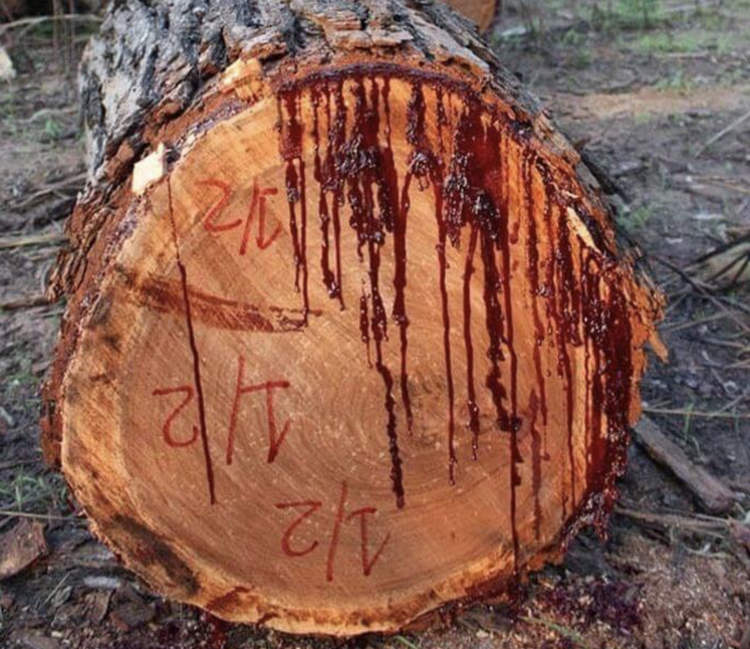Pterocarpus angolensis, commonly known as wild teak or bloodwood, is a species of tree native to Southern Africa known primarily for the dark red sap it secretes which looks like blood when the tree is cut.
Well-known in tropical Africa, where it is used to make high-quality furniture and musical instruments, wild teak is resistant to termites and has a nice, spicy fragrance. It is also resistant to fire so trees are sometimes planted around structures that need to be protected from flames. But outside of southern Africa, bloodwood is most known for its unique dark red sap. Its resemblance to blood has made some people speculate about the tree’s magical healing powers in blood illnesses, none of which have been proven by conventional medicine.

Looking at photos of cut Pterocarpus angolensis trees, it’s easy to see where the name bloodwood comes from. The oozing red sap makes it seem like the cut trunks are actually bleeding, but that is no blood, just tannin-rich sap. Most plants have parts – leaves in particular – that contain between 12 and 20 percent tannins. In comparison, bloodwood sap is 77 percent tannins.
It’s tannins that give the sap of the wild teak its blook-like color, but they have another purpose. Their astringent taste makes animals foolish enough to try to consume it think again, and if the taste is not enough to convince them, tannins’ ability to bind to nutrients like proteins prevents animals from properly digesting food. So, technically, the blood-like sap of bloodwood is the tree’s natural defense mechanism.
The wood of Pterocarpus angolensis has plenty of uses, but its weird sap isn’t useless either. Apart from its controversial use in alternative medicine, as a cure for various diseases of the blood, it can be used as a dye, and some people mix it with animal fat to create a sort of cosmetic ointment.






